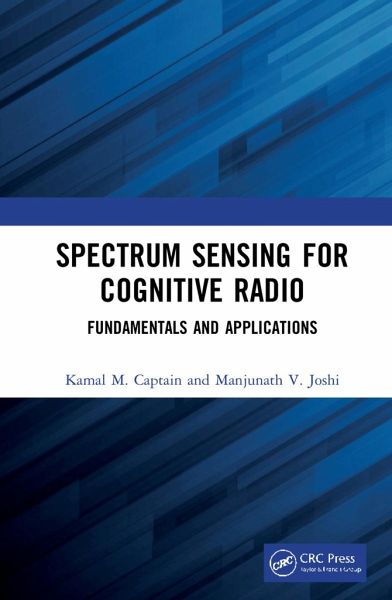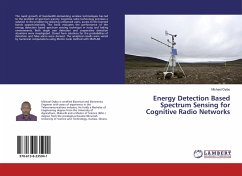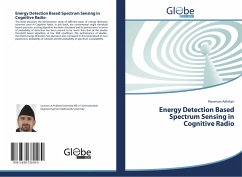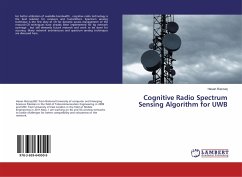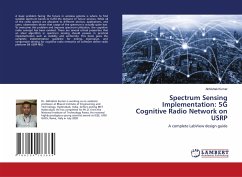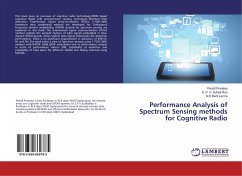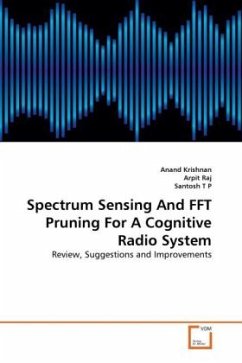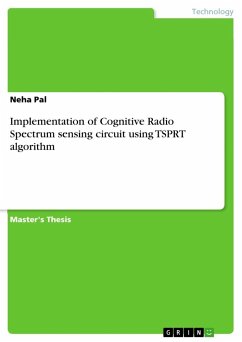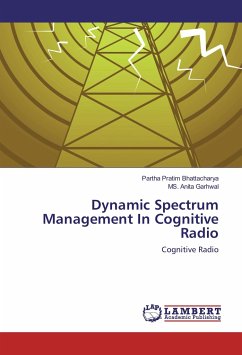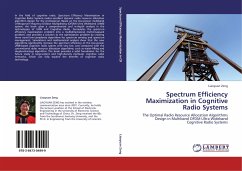Spectrum Sensing for Cognitive Radio
Fundamentals and Applications
Versandkostenfrei!
Versandfertig in 1-2 Wochen
Weitere Ausgaben:

PAYBACK Punkte
66 °P sammeln!




The text examines basic spectrum sensing algorithm for narrowband spectrum sensing to the more advanced wideband spectrum sensing in a single volume. It will be an ideal reference text for graduate students and academic researchers in the field of electrical engineering, electronics engineering and remote sensing.
KAMAL M. CAPTAIN: Dr. Kamal M. Captain received his Ph.D. in the area of Spectrum Sensing for Cognitive Radio from Dhirubhai Ambani Institute of Information and Communication Technology (DAIICT), Gandhinagar, India. Before this, he completed his M.Tech in Communication Systems from Sardar Vallabhbhai National Institute of Technology (SVNIT) and B.E degree in Electronics and Communication Engineering from Veer Narmad South Gujarat University (VNSGU), Surat, Gujarat, India. He is currently serving as an assistant professor at Sardar Vallabhbhai National Institute of Technology (SVNIT), Surat, Gujarat, India. Prior to joining SVNIT, he served as a senior engineer (signal processing) at eInfochips, Ahmedabad, India. He has been involved in active research in the areas of cognitive radio, wireless communication, signal processing, and machine learning and has several journals and international conference papers, including IEEE Transactions. He has also served as a reviewer for IEEE Transactions, letters, and top tier conferences. MANJUNATH V. JOSHI: Prof. Manjunath V. Joshi received the B.E. degree from the University of Mysore, Mysore, India, and the M.Tech. and Ph.D. degrees from the Indian Institute of Technology Bombay (IIT Bombay), Mumbai, India. He is currently serving as a Professor and and Dean Research and Development with the Dhirubhai Ambani Institute of Information and Communication Technology, Gandhinagar, India. He has been involved in active research in the areas of Signal and Image Processing, Cognitive Radio, Computer Vision, and Machine Learning and has several publications in quality journals and conferences. He has co-authored four books entitled Motion-Free Super Resolution (Springer, New York-2005), Digital Heritage Reconstruction using Super-resolution and Inpainting (Morgan and Claypool-2016), Regularization in Hyperspectral Unmixing (SPIE Press-2016), and the book entitled Multi-resolution Image Fusion in Remote Sensing (Cambridge University Press, UK-2019). Currently, he is contributing as a co-author of a book to be published by Springer in remote sensing, where seven positive reviews have been received. So far, nine Ph.D. students have been graduated under his supervision. Dr. Joshi was a recipient of the Outstanding Researcher Award in Engineering Section by IIT Bombay in 2005 and the Dr. Vikram Sarabhai Award for 2006-2007 of information technology constituted by the Government of Gujarat, India. He served as a Program Co-Chair for the 3rd ACCVWorkshop on E-Heritage, 2014, held in Singapore. He has also served as Visiting Professor at IIT Gandhinagar and IIIT Vadodara. He has visited Germany, Italy, France, Hong Kong, the USA, Canada, South Korea, Indonesia and contributed to research in his area of expertise.
Produktdetails
- Verlag: CRC Press
- Seitenzahl: 256
- Erscheinungstermin: 5. Januar 2022
- Englisch
- Abmessung: 240mm x 161mm x 18mm
- Gewicht: 552g
- ISBN-13: 9780367542931
- ISBN-10: 0367542935
- Artikelnr.: 62276805
Herstellerkennzeichnung
Libri GmbH
Europaallee 1
36244 Bad Hersfeld
gpsr@libri.de
Für dieses Produkt wurde noch keine Bewertung abgegeben. Wir würden uns sehr freuen, wenn du die erste Bewertung schreibst!
Eine Bewertung schreiben
Eine Bewertung schreiben
Andere Kunden interessierten sich für




